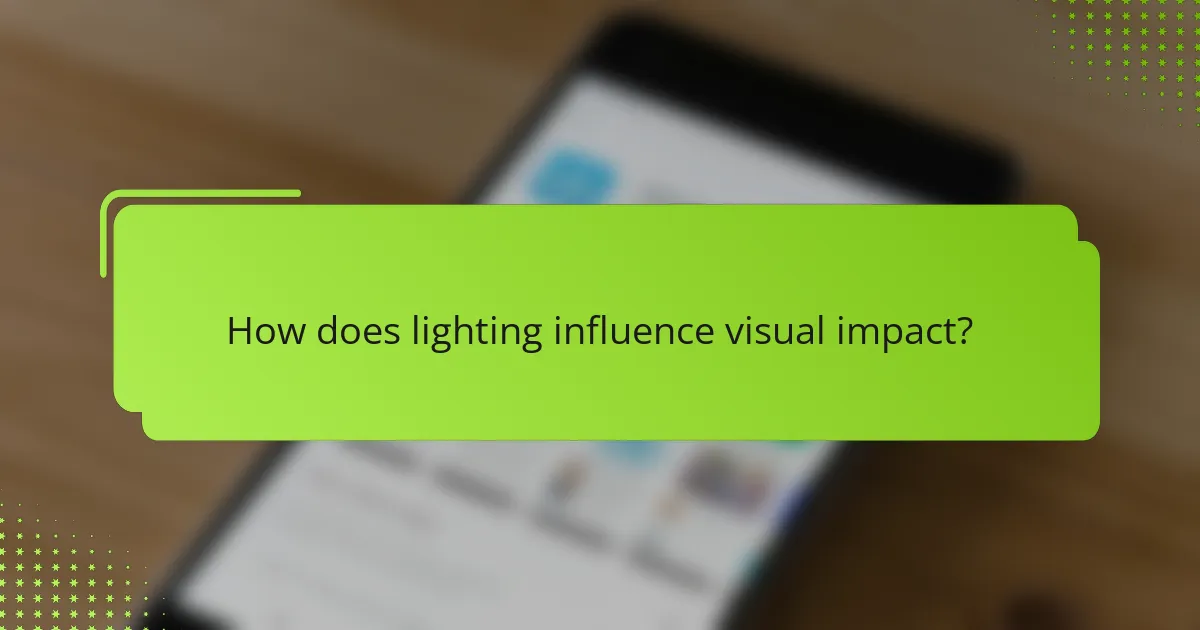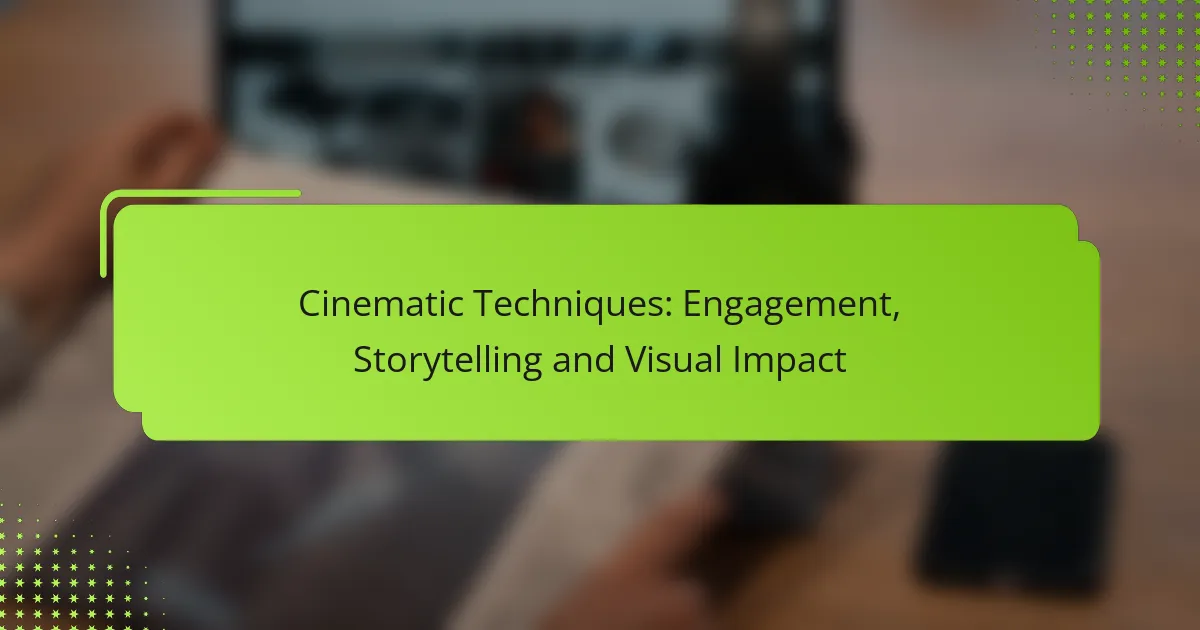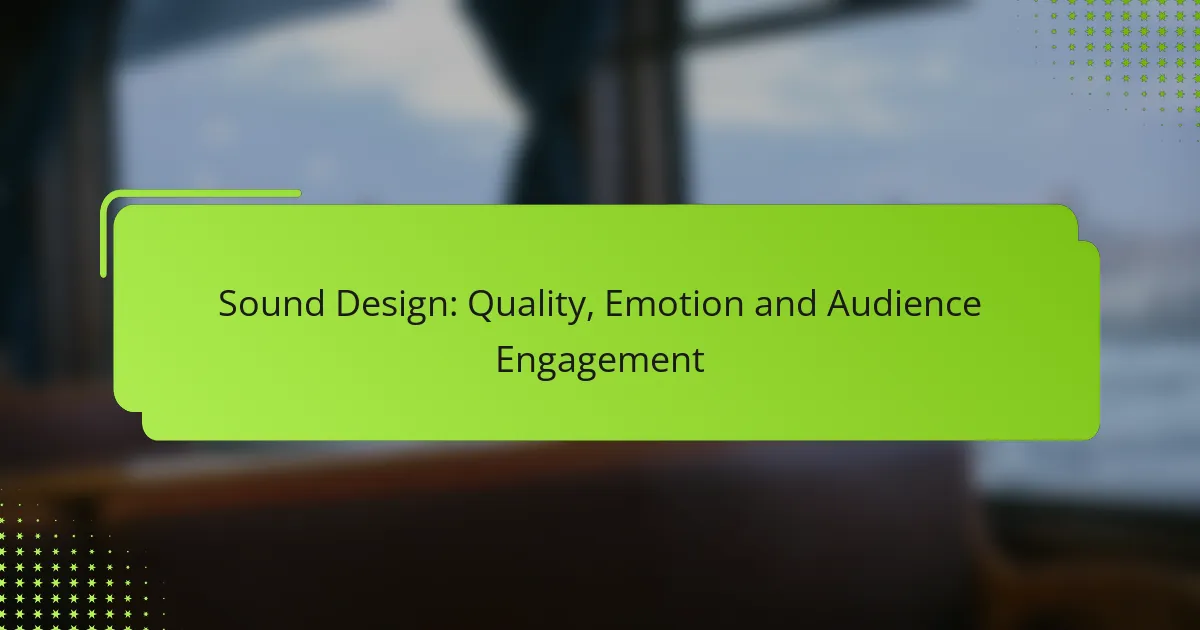Cinematic techniques play a crucial role in enhancing storytelling by forging a stronger connection between the audience and the narrative. By utilizing visual elements, sound design, and editing, filmmakers can effectively convey emotions, develop characters, and propel the plot forward, creating an immersive experience that captivates viewers.

How do cinematic techniques enhance storytelling?
Cinematic techniques significantly enhance storytelling by creating a deeper connection between the audience and the narrative. Through visual elements, sound design, and editing, filmmakers can convey emotions, develop characters, and advance the plot effectively.
Character development through visual cues
Visual cues play a crucial role in character development by using imagery to reveal traits and motivations. For instance, a character’s clothing, facial expressions, and body language can communicate their emotional state and background without dialogue. Subtle changes in lighting can also reflect a character’s transformation throughout the story.
Directorial choices, such as camera angles and framing, further emphasize character relationships. A close-up shot can create intimacy, while a wide shot may illustrate isolation. These visual techniques help audiences understand characters on a more profound level.
Emotional resonance via cinematography
Cinematography shapes the emotional tone of a film through the use of color, lighting, and camera movement. Warm colors often evoke feelings of comfort, while cooler tones can create a sense of unease. For example, a dimly lit scene can enhance tension, while bright lighting may suggest hope or joy.
Camera movement also influences emotional engagement. Smooth tracking shots can immerse viewers in a scene, while abrupt cuts may create a jarring effect. Understanding how these elements work together allows filmmakers to manipulate audience emotions effectively.
Plot progression with editing techniques
Editing techniques are essential for maintaining narrative flow and pacing in a film. Techniques such as cross-cutting can build suspense by juxtaposing different storylines, while continuity editing ensures a seamless transition between scenes. Effective editing keeps the audience engaged and invested in the unfolding story.
Moreover, the rhythm of cuts can influence the perceived urgency of a scene. Quick cuts can heighten excitement, while longer takes allow for reflection. Filmmakers should consider the emotional impact of their editing choices to enhance plot progression and audience engagement.

What are the key cinematic techniques for engagement?
Key cinematic techniques for engagement include the use of close-ups, dynamic camera movements, and sound design. These elements work together to create an immersive experience that captivates audiences and enhances storytelling.
Use of close-ups for intimacy
Close-ups are powerful tools for creating intimacy between characters and the audience. By focusing on a character’s facial expressions, filmmakers can convey emotions that resonate deeply, allowing viewers to connect on a personal level.
When using close-ups, consider the context and timing. A well-placed close-up can heighten tension or reveal vulnerability. For instance, a close-up during a pivotal moment can amplify the emotional stakes of a scene.
Dynamic camera movements for excitement
Dynamic camera movements, such as tracking shots or handheld techniques, can inject excitement and energy into a scene. These movements create a sense of urgency and can make action sequences more engaging.
To effectively use dynamic movements, plan the choreography of the scene carefully. For example, a sweeping shot that follows a character can enhance the thrill of a chase, while a shaky handheld shot can evoke chaos in a tense moment.
Sound design to amplify emotions
Sound design plays a crucial role in amplifying emotions and enhancing the overall cinematic experience. By combining dialogue, sound effects, and music, filmmakers can create an auditory landscape that supports the visual storytelling.
When crafting sound design, pay attention to how different sounds can influence mood. For example, a haunting score can evoke sadness, while upbeat music can generate excitement. Use silence strategically as well; it can heighten tension and draw attention to key moments.

How does lighting influence visual impact?
Lighting significantly affects visual impact by shaping the mood, emphasizing elements, and guiding audience attention. Different lighting techniques can evoke various emotions and enhance storytelling in film and photography.
High-key lighting for a cheerful tone
High-key lighting is characterized by bright, even illumination with minimal shadows, creating a light and cheerful atmosphere. This technique is often used in comedies, musicals, and advertisements to convey happiness and positivity.
To achieve high-key lighting, filmmakers typically use multiple light sources to fill in shadows and maintain a balanced exposure. Softboxes and reflectors are common tools that help diffuse light and create this effect.
When using high-key lighting, consider the setting and subject matter. For instance, a sunny outdoor scene or a lively indoor party can benefit from this approach, enhancing the overall joyful tone.
Low-key lighting for suspense and drama
Low-key lighting involves strong contrasts between light and dark areas, creating a moody and suspenseful atmosphere. This technique is frequently employed in thrillers, horror films, and dramatic scenes to evoke tension and intrigue.
To create low-key lighting, filmmakers often use a single light source positioned to cast deep shadows, highlighting specific features while leaving other areas in darkness. This selective illumination draws attention to key elements and enhances emotional depth.
When utilizing low-key lighting, be mindful of the balance between light and shadow. Too much darkness can confuse viewers, while too little can diminish the intended impact. Aim for a dramatic effect that keeps the audience engaged and on edge.

What role does color play in film?
Color plays a crucial role in film by influencing emotions, setting the mood, and enhancing storytelling. It can evoke specific feelings and guide the audience’s perception of characters and events throughout the narrative.
Color grading for mood setting
Color grading is the process of adjusting the colors in a film to create a desired emotional response. For example, warmer tones can evoke feelings of comfort and nostalgia, while cooler tones may suggest sadness or tension. Filmmakers often use color grading to maintain consistency in mood across scenes.
When applying color grading, consider the overall theme of the film. A romantic film might utilize soft pastels, while a thriller could lean towards stark contrasts and desaturated colors. Tools like DaVinci Resolve or Adobe Premiere Pro can help achieve these effects effectively.
Symbolic use of colors in storytelling
Colors often carry symbolic meanings that can enhance storytelling. For instance, red may symbolize passion or danger, while blue can represent calmness or sadness. Filmmakers strategically use these color associations to deepen the narrative and connect with the audience on a subconscious level.
To effectively use color symbolism, filmmakers should be aware of cultural interpretations. For example, white is often associated with purity in Western cultures, but it can symbolize mourning in some Eastern cultures. Understanding these nuances can enrich the storytelling experience and resonate more with diverse audiences.

How can filmmakers utilize editing for better engagement?
Filmmakers can enhance engagement through editing by carefully selecting and arranging shots to create a compelling narrative flow. Effective editing techniques can maintain audience interest, evoke emotions, and clarify the story’s message.
Montage for pacing and rhythm
Montage is a powerful editing technique that combines a series of short shots to convey a sequence of events or ideas within a condensed timeframe. This method can establish pacing and rhythm, allowing filmmakers to control the emotional tempo of a scene. For instance, a fast-paced montage can create excitement, while a slower montage can evoke reflection.
When using montage, consider the emotional impact of each shot and how they transition into one another. A well-executed montage can effectively compress time, making it ideal for depicting character development or significant changes in a storyline. Aim for a balance between visual variety and thematic coherence to maximize engagement.
Cross-cutting to build tension
Cross-cutting, or parallel editing, involves alternating between two or more scenes happening simultaneously, creating a sense of urgency and tension. This technique can heighten suspense by juxtaposing contrasting actions or emotions, keeping viewers on the edge of their seats. For example, cutting between a character in danger and another character racing to help can amplify the stakes.
To effectively use cross-cutting, ensure that the scenes being interwoven are thematically linked and contribute to the overall narrative. Timing is crucial; maintain a rhythm that builds tension without overwhelming the audience. Avoid excessive cuts that may confuse viewers; instead, aim for clarity and emotional resonance in each transition.

What are the prerequisites for mastering cinematic techniques?
To master cinematic techniques, one must have a solid understanding of film theory and be proficient with industry-standard software. These foundational skills enable filmmakers to effectively engage audiences and tell compelling stories through visual media.
Understanding film theory basics
Film theory provides the framework for analyzing and interpreting films, focusing on elements such as narrative structure, genre conventions, and visual storytelling. Familiarity with concepts like mise-en-scène, cinematography, and editing techniques is crucial for creating impactful films.
Consider studying classic films and their techniques to see theory in action. Analyzing how directors use camera angles, lighting, and sound can deepen your understanding and inspire your own creative choices.
Familiarity with industry-standard software
Proficiency in software like Adobe Premiere Pro, Final Cut Pro, or DaVinci Resolve is essential for editing and post-production. These tools allow filmmakers to manipulate footage, enhance visuals, and create a polished final product.
Start with basic tutorials to learn the interface and key functions, then gradually explore advanced features. Regular practice will improve your efficiency and creativity, helping you avoid common pitfalls like poor audio mixing or ineffective transitions.

How do different genres employ cinematic techniques?
Different genres utilize cinematic techniques to enhance storytelling, engage audiences, and create visual impact. Each genre has its own set of conventions that dictate how these techniques are applied, influencing the overall viewer experience.
Action films and fast-paced editing
Action films often rely on fast-paced editing to maintain high energy and excitement. Quick cuts, typically ranging from a few frames to a couple of seconds, create a sense of urgency and keep viewers on the edge of their seats.
Directors may use techniques like cross-cutting to build tension between simultaneous events or to heighten the stakes during climactic moments. It’s crucial to balance speed with clarity; excessive rapid cuts can confuse the audience rather than engage them.
Horror films and suspenseful soundscapes
Horror films employ suspenseful soundscapes to evoke fear and tension. Sound design, including eerie music, sudden loud noises, and unsettling silence, plays a vital role in creating an immersive experience that keeps viewers anxious.
Effective use of sound can enhance visual elements, such as a character creeping through a dark room, by amplifying the emotional response. Filmmakers should avoid overusing jump scares, as they can desensitize audiences and diminish the overall impact of the film.



